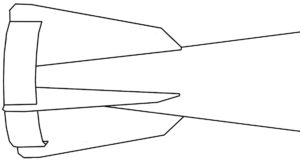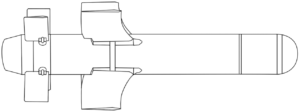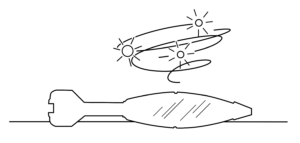Glossary
2000 lbs
Air-delivered bombs in the 2,000-pound weight class are amongst the largest regularly deployed by modern air forces. They typically have significant destructive potential, being used to target large concentrations of troops, armoured vehicles, or, more often, buildings or fortified structures.

Air-Delivered Bomb
Unpowered munitions dropped from an aerial vehicle, such as a plane or drone. They can be either guided or unguided and range in weight from only a few kilograms to more than 2,000 kilograms — roughly the weight of a car. Heavier air-delivered bombs are among the most destructive munitions in military arsenals.

Air-to-Air
Munitions that are delivered from above the surface of the earth, typically from an aerial vehicle, and designed to strike other aerial targets, including aeroplanes and UAVs.
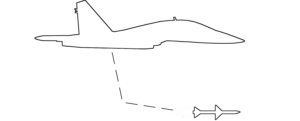
Air-to-Surface
Munitions that are delivered from above the surface of the earth, typically from an aerial vehicle, and designed to strike surface-based targets — whether on land or at sea.
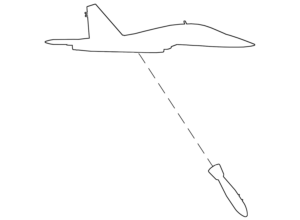
Ammunition
Munitions which are fired by a weapon or weapon system. A single unit is known as a round. Colloquially, ‘ammo’.
Artillery (weapons)
Artillery weapons are generally understood to be those used to provide supporting fires; they are typically capable of indirect fire at relatively long ranges, and are usually operated by specialised formations. Artillery weapons can be generally divided into guns (artillery guns and mortars) and rocket or missile launchers (i.e., weapons launching powered munitions).
Artillery Gun
A gun designed to engage targets at the limits of, or beyond, a user’s line-of-sight (i.e., those weapons capable of long-range fire, especially indirect fire).With a typical range of between 30 and 40 kilometres, they are deemed medium-range artillery.
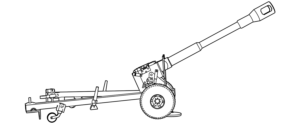
Artillery Gun Projectile
Indirect-fire projectiles that typically have a cylindrical shape and conical (ogival) nose, generally fired from artillery guns. Most artillery gun projectiles are unguided and range from 35 to 87 centimetres in length. With a typical range of between 30 and 40 kilometres, artillery guns are deemed medium-range munition.

Ballistic Trajectory
The form of motion experienced by an unpowered, unguided munition that moves along a curved path under the action of only gravity and drag (air resistance). These flight paths generally resemble a parabola, but vary based on how a munition is propelled and the angle at which it is fired or launched. Different trajectories may be desirable for different weapons or circumstances, such as to permit indirect fire.

Barrel
The primary pressure-bearing component of a projectile weapon (especially a gun) that contains and directs the projectile.
Blast Munition
Use the rapid expansion of gases released by a detonating high explosive compound inside the munition to generate explosive power. Blast munitions are often considered general-purpose munitions and large examples can have powerful and widespread effects on targets such as structures and personnel.

Breech
The rear opening of a barrel (opposite the muzzle), usually containing the chamber of the gun.

Carrier (Cargo) Munition
General term for munitions which carry and dispense a payload intended to function outside of the munition. Payloads can vary significantly, from submunitions (in a cluster munition), to illumination candles (illumination munition), smoke pellets (smoke munition), or even propaganda leaflets.
Cartridge
A single, self-contained unit (round) of ammunition consisting of a cartridge case, primer, propellant, and one or more projectiles.
Cartridge Case
The portion of a cartridge that encloses the propellant, projectile(s), and primer. Absent from caseless cartridges and separate-loading ammunition. Traditionally metallic, although some munitions (especially tank gun projectiles) may use polymer cases or cases made from materials that are entirely consumed upon firing.
Chamber
The component of a gun designed to accept a round of ammunition and contain the pressure generated on firing. Often, but not always, formed from the breech of the barrel.
Chemical Munition
Chemical weapons are munitions which deliver a chemical agent. These agents can be in gaseous, liquid, or solid form and can be deployed using a variety of munition types sometimes repurposed for chemical dispersion, including air-delivered bombs, rockets/missiles, mortar projectiles, and artillery projectiles. The use of these munitions can often result in widespread effects, and many are considered inherently indiscriminate. The 1997 Chemical Weapons Convention banned the development, production and use of chemical weapons. 193 countries have so far committed to the convention, including the United States, Russia, and China.
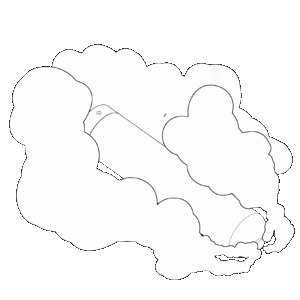
Cluster Munition
Carrier munitions which contain and dispense submunitions (smaller munitions, sometimes called ‘'bomblets’'). Cluster munitions generally scatter their payload over a wide area, either to increase hit probability or for area-denial purposes. They can take the form of multiple munition categories. Some submunitions - especially older models, or those stored or employed incorrectly - can have a high dud rate, resulting in an enduring explosive hazard. More than 100 states have signed an international convention banning the use of cluster munitions - but not Russia, the United States, China, or Israel.
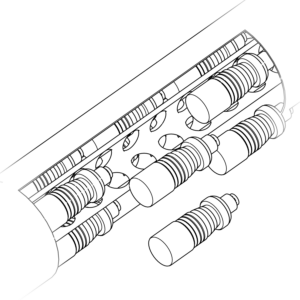
Crater
A cavity formed as a consequence of the explosion or, less frequently, the impact of a munition.

Decoy Munition
A munition that is primarily designed to distract, mislead, or disorient other munitions.
Delivered Munition
A munition that has been employed—e.g., fired, dropped, or launched—from a delivery platform. The munition may have either functioned or failed to function.
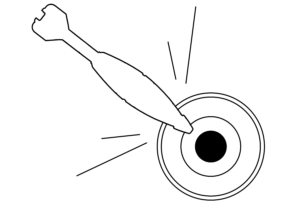
Driving Bands
A soft metal band around a projectile, usually located near its base. Driving bands are most common to artillery gun projectiles.
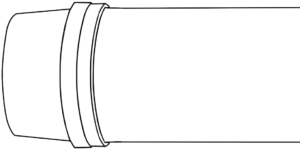
Drone (UAV)
Unmanned aerial vehicles which may be remotely piloted, or fly autonomously or semi-autonomously. UAVs which feature integrated munitions or warheads are often referred to as “suicide drones” or “one-way-attack (OWA) munitions”, and effectively function as guided missiles. This attribute is tagged in the OSMP to align with vernacular usage.
Fins
A fixed or adjustable vane or aerofoil affixed longitudinally to an aerodynamically or ballistically designed body for stabilisation or control purposes. The term ‘fins’ is used generically in the OSMP to also refer to wings and canards.

Fins Attached to Perforated Cylinder
Fins attached to a munition via a perforated cylinder. A fin assembly of this type is typical on mortar projectiles, and this expression is used for identifying these munitions rather than as a technical term.
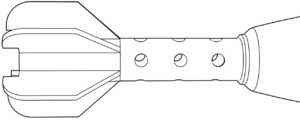
Fixed (Ammunition)
Ammunition which the propellant charge is entirely contained within the cartridge, with the cartridge case affixed to the projectile (including its fuze, if present). Sometimes ‘fixed loading ammunition’ or ‘self-contained ammunition’.
Fixed Fins
Fins that are not intended to move immediately prior to or after the employment of the munition.
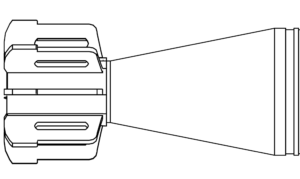
Fragmentation Munition
Fragmentation munitions use the detonation of an explosive to propel small fragments of material (‘fragmentation’) from the body of the munition at high velocity. A fragmentation munition typically affects a wider area than a simple blast munition of the same size, and is effective against personnel and unarmoured vehicles. Fragmentation is the primary mechanism of lethality for many common explosive munitions, but these munitions almost invariably also affect their environment through blast and other mechanisms (e.g., a high explosive fragmentation munition).

Functioned Munition
The munition has either partially or fully operated and the intended effect has occurred. For explosive munitions, this usually means a detonation.
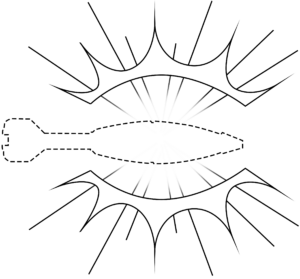
Fuze
A mechanism with explosive components designed to initiate a train of fire or detonation in a munition by a mechanical, chemical, or electrical action.
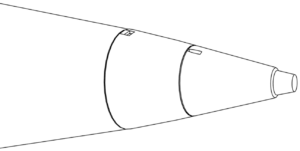
Gun
A weapon which uses the combustion of a propellant to generate high-pressure gas in a sealed chamber in order to accelerate a projectile in a controlled manner. Small arms (i.e., firearms) are guns, as are artillery guns, mortars, and other weapons.
High Explosive Fragmentation (Munition)
A common functional type of munition which combines blast and fragmentation effects. Usually abbreviated as ‘HE-FRAG’.
Illumination Munition
Munitions intended to illuminate an area or position using visible or other light, rather than killing or wounding a target. There are different types of illumination rounds which can dispense flares, infrared devices, or certain incendiary materials such as white phosphorus. They can be also used to highlight and mark targets in dark or low-visibility environments.
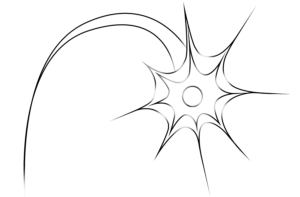
Incendiary Munition
Rather than explosive power (i.e, blast or fragmentation mechanisms), incendiary munitions rely on the chemical reactions of flammable materials to ignite and set fire to targets including buildings, supplies, and vehicles. They are typically used against flammable targets such as fuel and ammunition dumps or vegetation, and can be delivered by a range of platforms including aircraft and artillery guns. Examples of incendiary compositions include white phosphorus, napalm, and thermite. Incendiary effects are sometimes a desired additional damage mechanism for other types of munitions, but the term ‘incendiary munition’ is usually reserved for those which rely primarily on thermal damage mechanisms.
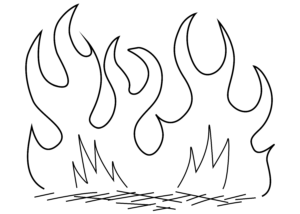
Indirect Fire
Fire directed at targets which may or may not be within the operator’s line-of-sight, where the weapon is not aimed directly at the target (i.e., fire which uses the arcing trajectory of a projectile and/or the guidance characteristics of a munition to strike targets). Commonly associated with artillery weapons.
Kinetic Munition
Kinetic energy weapons use the high speed of a projectile to cause damage to a target. These projectiles do not typically contain any explosive material, instead generating shock waves and heat on impact. They are often used to penetrate ‘hard’ targets, such as armoured vehicles and buildings.
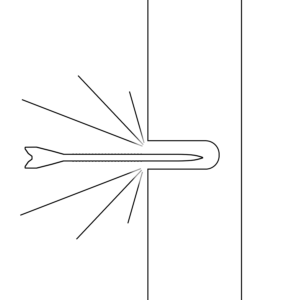
Mines
Emplaced munitions either activated remotely or by the target or victim
Missile
A powered munition with the ability to alter its trajectory once it has been launched.
Mortar
A relatively short-barrelled gun designed for indirect fire which fires low-velocity projectiles. With a typical range of between 50 and 9,000 metres, they are deemed short-range artillery.
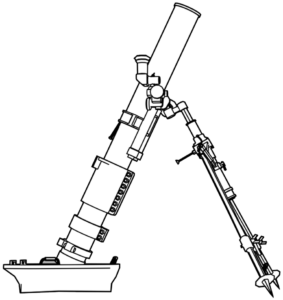
Mortar Projectile
Relatively small indirect-fire projectiles that generally have a distinctive 'teardrop' shape and fins at the rear, fired from mortars. Mortar projectiles are typically unguided and range from 37 to 235 centimetres in length. Mortar guns have a typical range of between 50 and 9000 metres, meaning they are deemed short-range artillery.

Munition
An expendable item which is designed to achieve lethal or non-lethal operational effects by means of an effect mechanism (e.g., blast, fragmentation, or smoke), and which travels from a source (e.g., individual weapon, vehicle, etc.), via a method of delivery (e.g., dropped from an aircraft, fired from a gun, etc.), to a target or target area.
Muzzle
The forward end of a gun barrel, through which projectiles exit.

Mwatana for Human Rights
An independent Yemeni organisation established in 2007 which advocates for human rights.

Obturating Rings or Gas Check Bands
Located at the widest section of a munition’s body, these features are designed to trap gas when the projectile is fired, thus improving the forward propulsion of the munition out of the barrel.

Powered Munition
A munition which features an onboard propulsion method (e.g., a rocket motor or turbofan) to maintain or adjust its rate of travel.The most common types of powered munitions are rockets and missiles.
Pre-Fragmented Body
The body of a warhead or explosive payload of a munition which is pre-scored or pre-cut in a deliberate pattern so that it breaks into relatively uniform fragmentation upon detonation. The scoring may be visible on the outside, inside, or both sides of the warhead body.
Precision Guided Munitions
Munitions, both powered and unpowered, which can alter their flight paths to strike a target with a high degree of precision.
Primer
An initiating element which ignites the main propellant charge of a munition when initiated. Most often an explosive charge, but sometimes functioning via plasma or another principle. May be contained in the head of a cartridge case (in fixed or semi-fixed ammunition) or loaded separately (in separate-loading ammunition).
Projectile
An object initially projected by an applied exterior force and continuing in motion by virtue of its own inertia, such as a bullet or hand grenade. Smaller projectiles (those fired from firearms) are often known as ‘bullets’, whilst certain larger projectiles (e.g., artillery gun projectiles) are sometimes referred to as ‘shells’.
Propellant
1.) The main propelling charge for a round of ammunition that burns to convert chemical energy into motive force for one or more projectiles. 2). Combustible material that is burned to provide thrust in a rocket motor.
Recoilless Munitions
Recoilless guns are direct-fire guns distinguished by a system of operation in which propellant gases (or another counter-mass, such as a powder or liquid) are expelled from the rear of the barrel in order to offset the recoil generated by forward momentum of the projectile. Many recoilless weapons have smoothbore barrels; however, several well-known models have rifled barrels. Weapons of the latter type are sometimes referred to as ‘recoilless rifles’. Recoilless weapons are generally sorted into two subcategories: crew-served recoilless weapons and shoulder-fired recoilless weapons.
Rifling
A pattern of (generally helical) grooves in the bore of a barrel which are designed to impart spin to a fired projectile. This rotation provides gyroscopic stability to the projectile, increasing accuracy and precision, and ensuring the projectile flies point-first toward the target.

Rivet Holes, Screws, Rivets
Short metal pins or bolts for holding together two plates or pieces of metal. Such rivet holes, typically filled with rivets, are found on multiple types of munition.
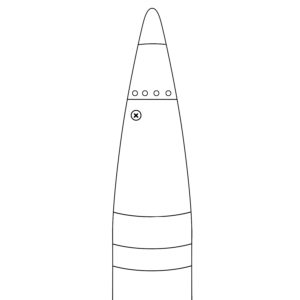
Rivet Holes, Screws, Rivets
Rivet: Short metal pins or bolts for holding together two plates or other components. Rivets are commonly used in the construction of munitions with thin-walled bodies. Rivet Hole: Holes through which rivets are passed to link together two components. Screw: A thin metal pin with a raised helical thread running along its length and a slotted head.
Rocket Assisted
A munition that contains a rocket motor to maintain its rate of travel. Rocket-assisted munitions are most often artillery gun projectiles or mortar projectiles, but other types are sometimes encountered.

Rocket Motor
A reaction propulsion system which derives its thrust from the ejection of hot gases generated by the burning of propellant.
Rocket or Missile
Rockets and missiles are two closely related types of powered munitions which utilise an internal propulsion method, typically a rocket motor, to maintain their rate of travel after launch. Rockets and missiles are typically relatively long and thin—with lengths ranging from 50 centimetres to 6.5 metres. Rockets are unguided those fitted with guidance systems are usually referred to as missiles. Missiles sometimes use propulsion methods other than rocket motors, such as turbojets. The effective range of rockets varies from as little as one kilometre to more than 40 kilometres, while missiles typically have a longer range — some more than 250 kilometres.

Round
A complete unit of ammunition. Some ammunition is fixed (that is, completely self-contained; e.g., modern small arms cartridges or most modern tank gun projectiles), whilst other ammunition is semi-fixed or separate loading (handled as two or more components). Where multiple components are required, ‘round’ is used to refer to them collectively.
Semi-fixed (Ammunition)
Ammunition that is separated into two groups of components: the projectile and fuze; and the cartridge case, primer, and one or more propellant charges. The propellant charge can usually be altered to increase or decrease range, or alter the gun’s ballistic trajectory.
Separate-loading (Ammunition)
Ammunition that consists of multiple separate parts, including a fuzed or unfuzed projectile, a primer, and one or more propellant charges.The propellant charge can usually be altered to increase or decrease range, or alter the gun’s ballistic trajectory.
Smoke Munition
Munitions that produce a smoke effect in an area, typically to obscure the enemy's vision rather than killing or wounding a target. Smoke munitions can mask forces from enemy view — including from sensors and designators— to provide cover for military movement. They may also be utilised to mark the location of enemy targets or provide signalling to friendly forces. Common smoke-producing chemicals include white phosphorus and hexa-chloroethane, often used in artillery gun projectiles.
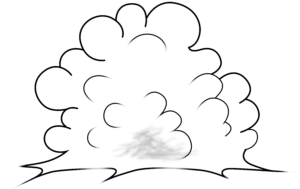
Strike line
A distinctive fragmentation pattern created by the detonation of many artillery gun projectiles.
Surface-to-Air
Munitions launched from a ground-based weapons platform, whether on land or at sea, and designed to strike aerial targets, including aeroplanes and UAVs.
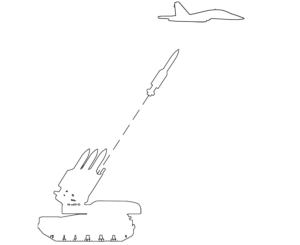
Surface-to-Surface
Munitions launched from a ground-based weapons platform, whether on land or at sea, and designed to strike other surface targets.

Suspension Lugs
An assembly with one or more mounting holes that is affixed to munitions carried under the wings or body of an aircraft, designed for the purpose of suspending these munitions below the airframe. The lugs are held by a variety of gripping mechanisms, which release their hold when the munition is dropped or separated from the aircraft.

Tailfins
Fins located in the rearward section (‘tail’) of a munition.
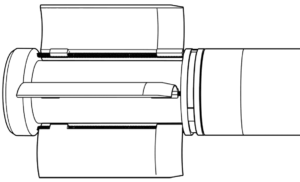
Tank Gun
Direct-fire, often smoothbore guns fitted to tanks. Tanks guns can fire a range of projectiles, ranging from relatively orthodox HE-FRAG types to highly specialised kinetic energy penetrators used to pierce the armour of other tanks. Tank guns can be very accurate weapons, and typically have an effective range of 3 to 5 kilometres.
Tank Gun Projectile
Projectiles fired from tank guns, which may vary from simple high explosive munitions to visually distinctive kinetic energy penetrators or complex ‘multi-purpose’ types which combine blast, fragmentation, shaped charge, and/or incendiary damage mechanisms. Common tank gun projectiles range from 40 to 70 centimetres in length. Tank guns typically have an effective range of 2 to 4 kilometres.

Thick-walled Body
When the body of a munition’s warhead or payload constitutes a relatively high percentage of the munition's overall weight, it is usually referred to as ‘thick-walled’. A thick-walled munition is often designed that way to generate significant lethal fragmentation upon detonation and/or because it requires a heavier construction for structural reasons (e.g., to withstand the pressures of being fired from a gun).
Thin-walled Body
When the body of a munition’s warhead or payload constitutes a relatively low percentage of the munition's overall weight, it is usually referred to as ‘thin-walled’. These munition bodies are usually only intended to serve as a container for the contents and are therefore designed to be as light as possible (e.g., many missile designs).
Undelivered Munition
Munitions that have not been employed from their delivery vehicles. This could mean they remains stored, unfired, or are about to be fired.
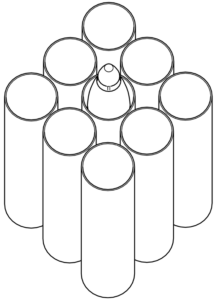
Venturi Nozzle
Constricting openings in rocket motors that increase the velocity and pressure of exiting gases, sometimes directing these to impart spin to the munition
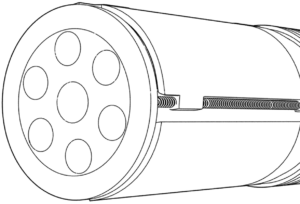
Welding Seams
When referring to the body of a munition, these are the junctions where sections have been connected by one of a variety of methods of welding. When the munition suffers an impact or functions, the body will often separate along these seams.

For more arms and munition-related terms, Armament Research Service (ARES) has produced a full 2022 glossary.
© All images copyright Airwars/Azul De Monte.
